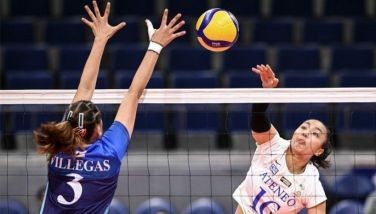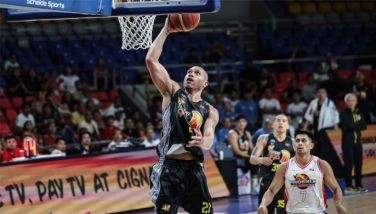Psychology of free throw shooting

SYDNEY – During a recent session with the new basketball scholars of the New South Wales Institute of Sport (NSWIS), sports psychologist Gerard Faure-Brac said players who make free throws consistently at practice but can’t seem to find the rhythm at the line in games aren’t able to fight off stress and could use clinical advice to develop mental toughness.
NSWIS basketball director and Australian national U-19 coach Damian Cotter said if stroke or technique is the problem, the solution is easily available. NSWIS has an advanced research center that employs a scientific approach to correcting free throw releases. Two cameras are used to film a player who shoots five foul shots. The film is processed frame-by-frame to provide a sequential analysis of how the free throw is attempted.
Basketball New South Wales (BNSW) Asia-Pacific director Ding De Villa said in coaching the Ravenswood School for Girls Year 11 championship team, he stressed the acronym BEEF to remind his players of the proper stance in shooting free throws where B is for balance, E is for eyes on the rim to visualize the ball entering the hoop, E is for elbow and F is for follow-through.
“We can’t compete without stress,†said Faure-Brac. “It’s a matter of coping with stress. But you’ve got to know where the stress is coming from. Is it the pressure from friends and family watching or the pressure from your school to win if you’re the main man? What’s going through your mind when you set up for a free throw? Stress is normal. If technique or stroke is the problem, that can be addressed through our film review on mechanics. Whatever is the problem, we can solve it at NSWIS.â€
Cotter said a key component of the NSWIS program is prehab which is as important as rehab. “It’s a kind of inoculation,†he explained. “We don’t wait for something bad to happen, we anticipate it and prepare the players to cope with the problem when and if it comes.†Cotter said conditioning is a top priority for a basketball player before he is even brought to the gym for ball drills.
* * * *
“Our conditioning model is about results, performance, detail, effort and character in a pyramid going from bottom to top,†he said. “Work ethic is critical. That’s why Angus Brandt is successful at Oregon State. He began to start late in his freshman season and matured to become a full-time first stringer and captain. He tore his ACL last year and is working hard to get back in shape. When Aussies like Angus leave NSWIS and go to the US, they come home for the holidays and report right back to the gym where they started. You don’t even need to remind them to go back to the gym.â€
Brandt, 23, has played against NBA cagers Klay Thompson of Washington State and Derrick Williams of Arizona so he’s been tested by serious opposition. His dream is to play at the highest level of the game. Whether or not he’ll be drafted in the NBA next year depends on how he performs out of a redshirt sit-out.
Cotter said Australia’s under-19 squad was undermanned entering the FIBA World Championships in Prague recently. “Our No. 1 shooting guard Mirko Dejeric was shot in the leg three days before we left Australia at a party,†said Cotter. “He was just at the wrong place at the wrong time. Then our top four guy Fabiljian Krslovic injured his MCL in the left knee in our first tune-up game in Spain heading to Prague. He was out for the tournament. But we held on and nearly made it to third place, losing to Lithuania in overtime in the battle for the bronze.â€
Cotter, 41, is now a much-sought-after coach all over the world. He is due to conduct clinics in Russia early next year and was recently designated to join the Australian national women’s Opals team coaching staff as one of two assistants. The other night, Cotter piloted the Norths Soul Sports Bears women’s club to a 93-33 thrashing of the Parramatta Wildcats at the Northern Suburbs Indoor Sports Center in Crow’s Nest. Candice Trevenna scored 23 points and grabbed 10 rebounds in 25:12 minutes to lead the charge.
Aside from Brandt, another Aussie home for the holidays from the US was 6-7 Phil Chircu of Whitman College, Washington. “At first, I was looking to play in an Ivy League school but with no commitments coming in, I considered a Division III school,†he said. “I was pleasantly surprised. Whitman is a school of only 2,000 students and it turned out to be the right fit for me. It’s been a rewarding experience both in basketball and academics. The education component is valuable and our team is highly motivated by the staff to win.â€
* * * *
Cotter said college prospects are sometimes misled by scouts and wind up without a commitment. “There are good and bad guys out there talking to players,†he said. Chircu, 20, said he’s been on championship teams since he was 14. “It’s incredible to play for your country,†he mentioned. “I’ve won in the under-14, 17 and 18 levels. Wearing the green and gold of Australia is a huge honor. Representing the country is a source of pride. Bonds you make with teammates and even players from other teams in international competitions last for ages. When I’m 28, I hope to be able to play as a pro in Europe as I have two passports and enjoy a successful and long career. At the moment, I’m not thinking beyond basketball.â€
Two other Australians in the US NCAA are 6-foot Jackson Aldridge of Butler and 6-6 Sam Rowley of the University of Albany. Brandt estimated about 15 to 20 Aussies are playing in Division I schools. BNSW CEO Danny Martinez said Australia has a lot of outstanding youngsters in the national team pipeline. One is 6-10 Isaac Humphries who just turned 15. Humphries played on the NSW Metro squad that lost to NSW Country in the 17-team Australian U-16 Championships in Adelaide last week. Country came back from a 20-point deficit to win by four.
Martinez, a Filipino who migrated here in 1986 with his parents, often visits Manila to check on basketball developments. Last year, he was brought by Fritz Gaston to watch the Ateneo-UST game in the UAAP. “I’m amazed at how coaches get away with throwing clipboards, screaming at referees and throwing tantrums,†he said. “In Australia, the referees won’t tolerate all that. Players and referees are advised how to handle the media and behave in public. We play a structured game in Australia so players know what to do coming off a timeout with whatever time is left on the clock. It’s not easy to penetrate and score because we’ve got big guys protecting the rim so guys put up floaters and teardrops. The game is changing. It’s progressing and Australia would like to move ahead with the Philippines through BNSW and our affiliate NSWIS.â€
- Latest
- Trending































